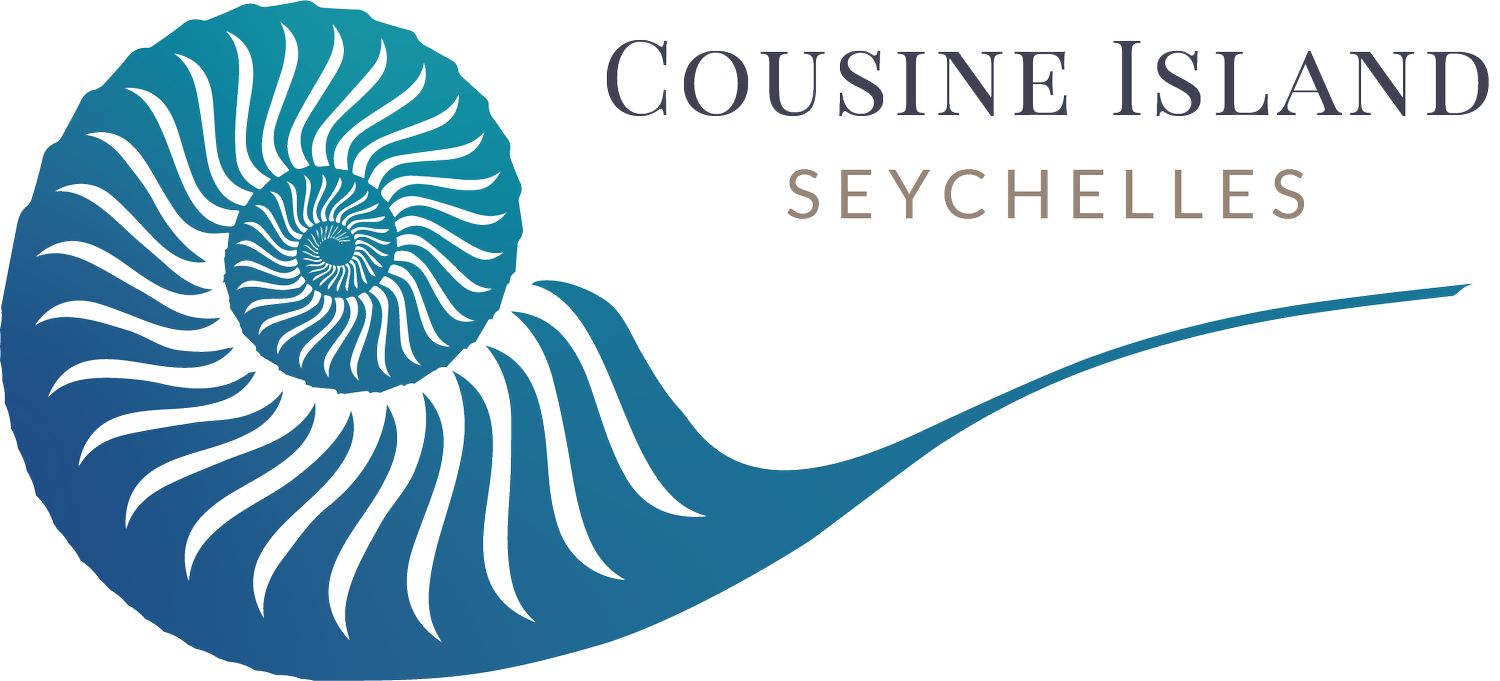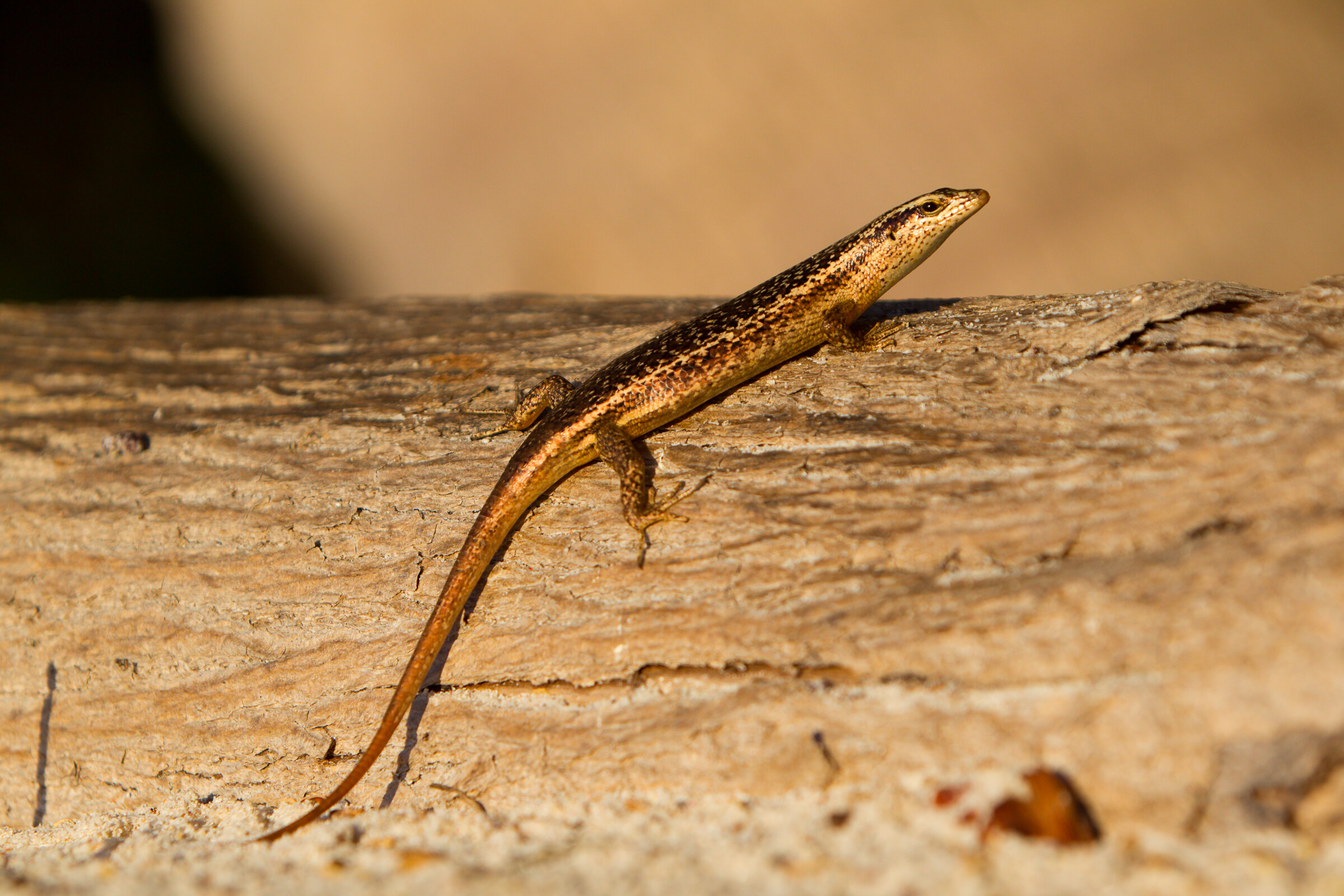سيشيل سكينك سيشيل (Mabuya sechellensis) المعروف أيضًا باسم مانغويا
إن سكينك سيشيل هو أحد الزواحف الرائعة المستوطنة في سيشيل، حيث يعيش في معظم الجزر الجرانيتية والمرجانية. تتشابه السكينك في المظهر مع أنواع السحالي الأخرى ولكنها تتميز بعدة طرق. والجدير بالذكر أنها تفتقر إلى الرقبة وتمتلك قدرة رائعة على التخلص من ذيولها عند تعرضها للتهديد، وهي آلية دفاعية تساعدها على التهرب من الحيوانات المفترسة.
وباعتبارها كائنات نهارية، تنشط حيوانات سكنك سيشيل في المقام الأول خلال النهار. وغالباً ما يمكن للزوار الملاحظين رصدها وهي تتغذى على مجموعة متنوعة من مصادر الغذاء، بما في ذلك الحشرات والثمار المتساقطة وحتى بيض الطيور البحرية. وتلعب حيوانات السكِنك هذه دوراً حيوياً في النظام البيئي من خلال السيطرة على تجمعات الحشرات والمساهمة في نثر البذور من الثمار التي تستهلكها. يعتبر حيوان سكِنك سيشيل صغير الحجم نسبياً، حيث يبلغ طوله حوالي 107 ملم، وهو أقل حجماً من سكِنك رايت، وهو نوع آخر موجود في جزيرة كوزين. ومن السمات المميزة لسنك سيشيل هي الخطوط السوداء المميزة التي تمتد على جانبيه، مما يميزه عن ابن عمه.
بالإضافة إلى أنشطتها الأرضية، فإن حيوان سكينيك سيشيل متسلق بارع. ويمكنها تسلق الأشجار ونخيل جوز الهند بسهولة للوصول إلى مصادر الغذاء المختلفة. تضيف براعتهم في التسلق بعداً إضافياً لقدرتهم على التنقل واستغلال موارد الجزيرة.
تعد جزيرة كوزين موطناً لأعداد هائلة من السحالي السيشيلية حيث تشير التقديرات إلى أن أكثر من 16,500 فرد يسكنون الجزيرة. وهذا يمثل واحدة من أعلى كثافة للسحالي في العالم، مما يجعل جزيرة كوزين نقطة جذب لعشاق الزواحف. ونظراً لأعدادها الوفيرة، فإن هذه السحالي يمكن مصادفتها بسهولة في أي نزهة حول الجزيرة. كما أن طبيعتها الفضولية وكثافتها العالية تعني أنها تتفاعل بشكل متكرر مع الزوار، بل إنها تتسلق أحياناً على الضيوف غير المرتابين لتصطحبهم في جولة.
تضيف هذه الزواحف الرائعة إلى التنوع البيولوجي والسحر في جزيرة كوزين، وتوفر للزوار فرصة فريدة لمراقبة وتقدير أحد الأنواع المستوطنة في سيشيل في بيئتها الطبيعية. سواء أكان يتشمس تحت أشعة الشمس أو يندفع عبر الأدغال، فإن حيوان سكينك سيشيل جزء لا يتجزأ من النظام البيئي النابض بالحياة في الجزيرة.


